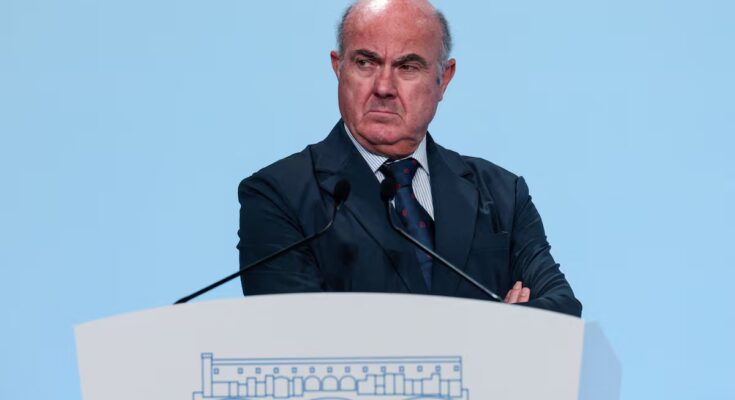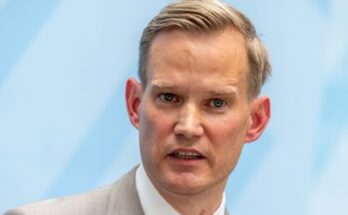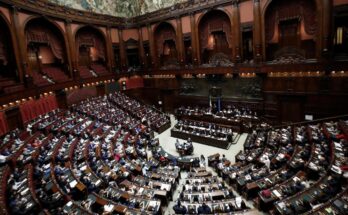The race begins to replace Luis de Guindos as vice-president of the European Central Bank. The process has not yet formally begun, but this Wednesday at the Eurogroup, the general secretariat of the Council of the EU explained to the finance ministers of the euro area what the process will be like: timetables and procedures to be adopted to replace De Guindos, who took office in 2018 and will leave office on 31 May, as number two of the highest monetary authority of the single currency. The deadline for submitting applications will probably expire in December, Council sources underline.
The Spaniard’s departure will also be the beginning of a process of renewal of the top positions of the ECB which in just over two years will have to change four of the six members of its Executive Council. For the process to officially begin, some procedures are missing, such as that of the president of the ECB, Christine Lagarde, who sent a letter to the Eurogroup informing that the mandate of the former Minister of Economy in Mariano Rajoy’s governments is about to expire.
Just because the process hasn’t formally begun doesn’t mean names haven’t already been considered. This same Wednesday, upon his arrival at the meeting of finance ministers, the Finnish Riikka Purra put on the table that of Olli Rehn, current governor of the Bank of Finland. “We strongly support his candidacy,” he noted. The former European Commissioner for Economic Affairs offered himself for the job: “I believe that I could make a significant contribution to the ECB as Vice-President thanks to my extensive experience in European decision-making,” he announced to his country’s parliament.
Portuguese minister Joaquim Miranda Sarmento also spoke about another potential candidate, his compatriot Mário Centeno. In this case he addressed questions from the press and avoided indicating whether the governor of the Bank of Portugal is a candidate or not. “It’s too early to talk about names,” he said, but not before recalling that “it’s good for the country that a Portuguese achieves an international position.” Miranda Sarmento gave the example of António Costa, who despite being a socialist – so is Centeno, who became finance minister and president of the Eurogroup – received the support of the current conservative executive.
De Guindos was the third Spaniard to join the ECB’s Executive Council, a small body made up of six members. First they were Eugenio Domingo Solans (1998-2004) and José Manuel González-Páramo (2004-2012). Between 2012 and 2018, precisely at the worst moments of the financial crisis, when Rajoy’s executive asked for a financial bailout, Spain had no one in this governing body of the monetary authority.
In addition to De Guindos, the Executive Council is now composed of the President of the ECB, the French Christine Lagarde, whose mandate expires on 31 October 2027. Five months earlier, the Irishman Philip Lane, who is also the bank’s chief economist, is expected to leave his position on this council. And on the last day of 2027 it will be the turn of German economist Isabel Schnabel to leave. Thus, after just over two years, the renewal at the top of the ECB will be profound and only the Dutchman Frank Elderson and the Italian Piero Cipollone will remain in place for a short while.
The current composition of the Executive Council already says a lot about the criteria used to be part of it. The five countries with the largest economies in the euro area are represented: Germany, France, Italy, Spain and the Netherlands. There is only one country that can be considered small: Ireland. There are also northern countries with orthodox traditions in their conception of monetary policies, mainly Germany and the Netherlands, which usually send so-called hawks to this council; against countries that send pigeons (Italy or France). Furthermore, gender balance is also sought, although there are now four men for two women.



